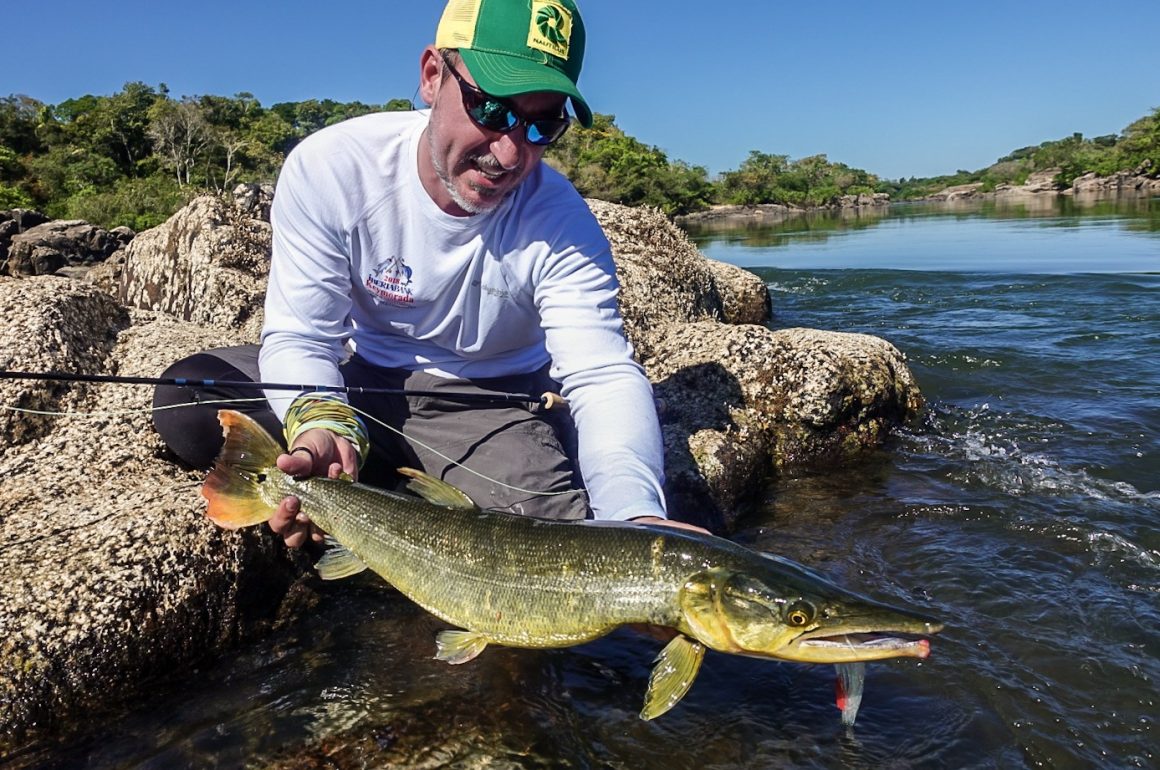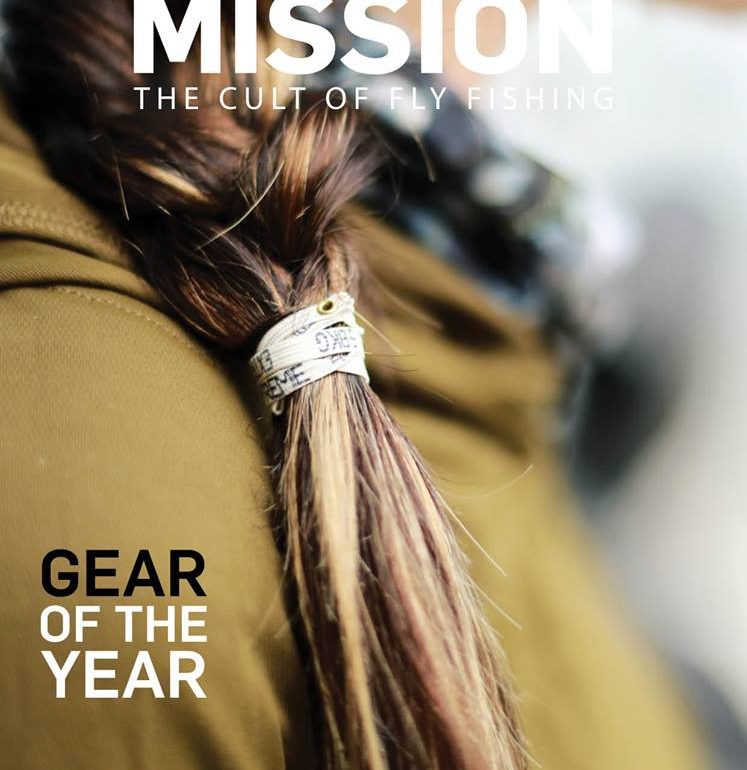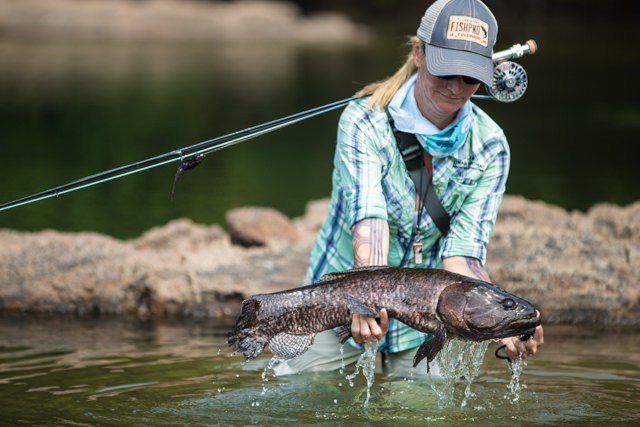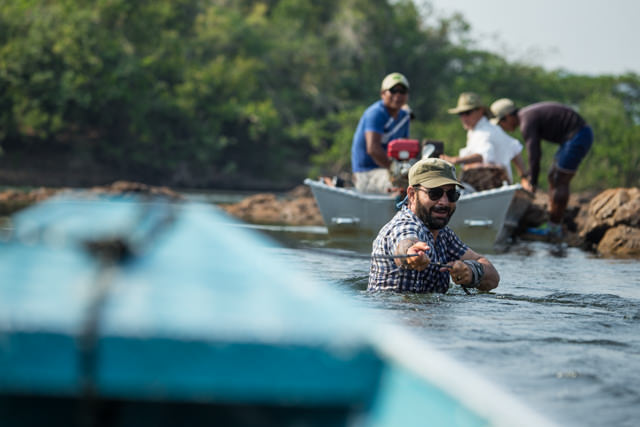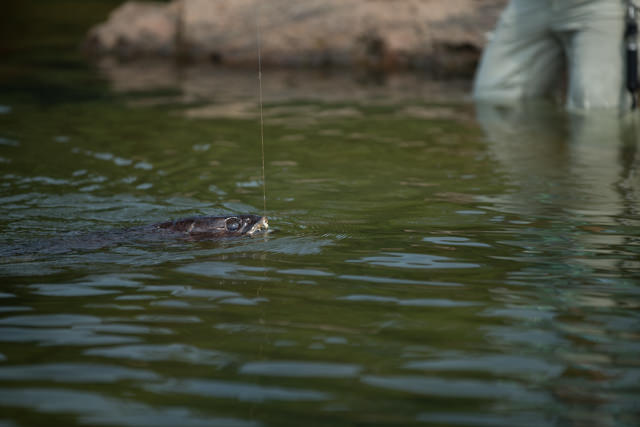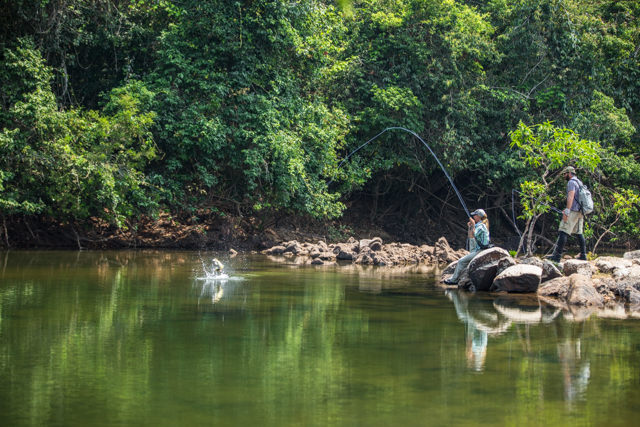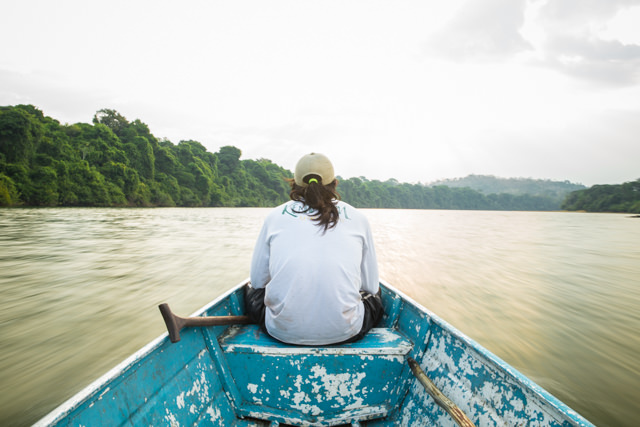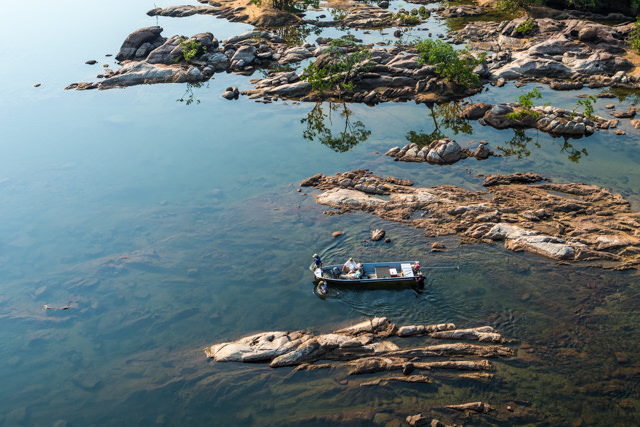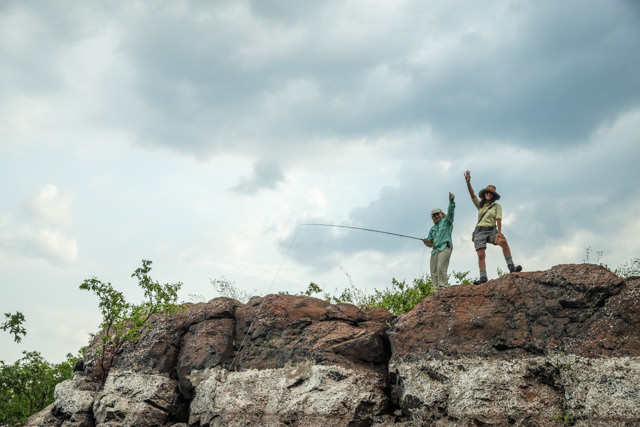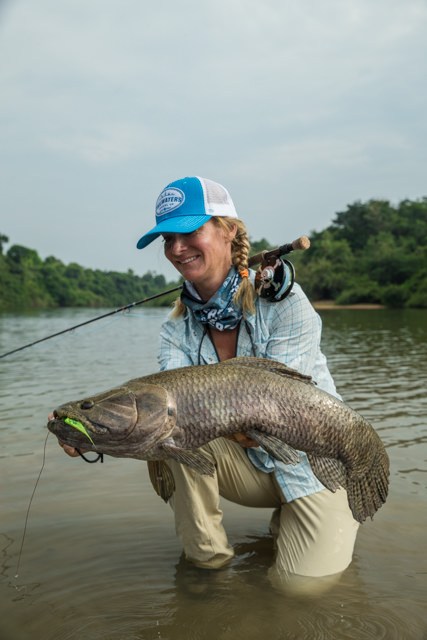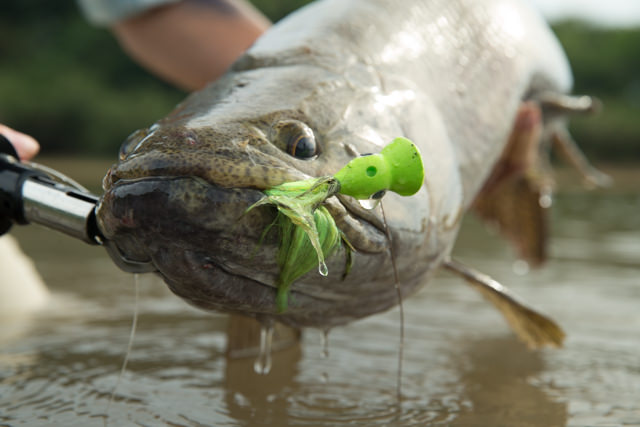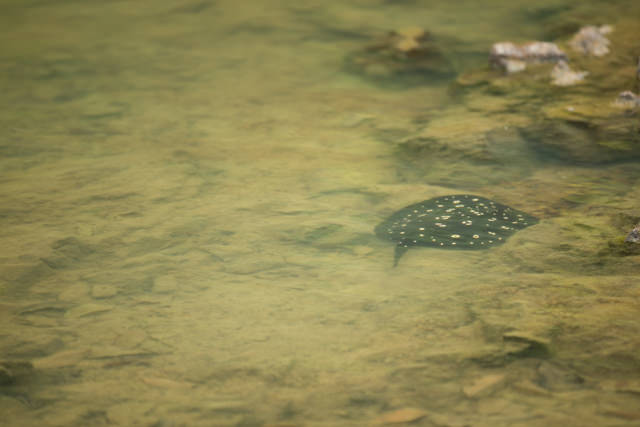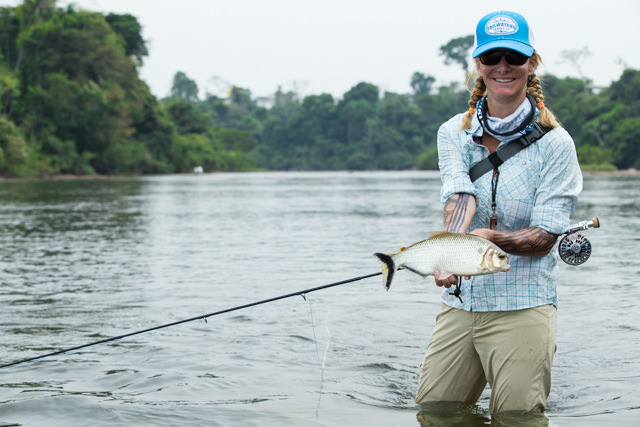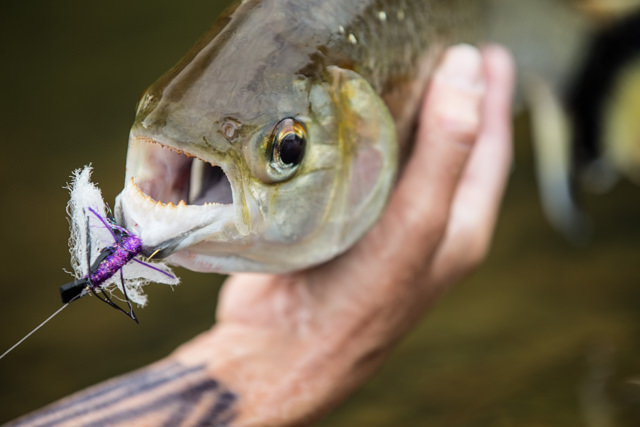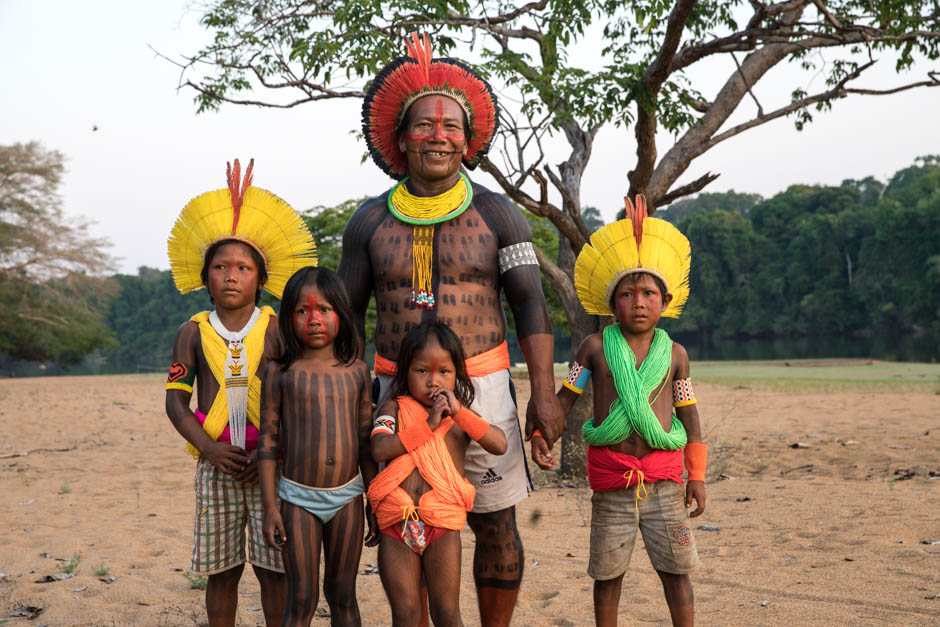The Untamed Angling team always looks forward to the opening week at Kendjam, and one of the most exciting aspects is having an untouched Iriri River to explore and scout for ourselves. Talk about a great opportunity to fly fish these world class waters!
The week started with a nice meeting with all Kayapo of Kendjam. We introduced our staff and new guides and had a great integration meeting at the warriors house. All of the members of the Kendjam village and the UA staff were – excited to launch the new season, and the energy of the young Kayapo guides and the new guides were the highlight of the event!
We are pleased to have an impressive guide team this season:
- Guilherme Manzione, our head guide, is a Brazilian guide trained and formed by Untamed Angling. He’s been part of the team since our very first exploratory season at Kendjam.
- Augusto Tosso is an Argentinean guide who has guided at Tsimane Lodge.
- Lucas de Zan is an Argentinean guide who guides for dorado and wolfish on the Entre Rios and is also passionate about the jungle and photography.
- Andre Vergara, our trainee guide, is a Brazilian who is the president of Brazilian Fly Fishing Association.
- We also have the Kayapo guide teams set in a rotation to involve more people from the village.
With everything in order, we finally got our feet wet on the water and started scouting things out.
As always during this part of the season, the Iriri River was very clear and had excellent water levels, flowing at a good pace day by day. The condition of the water was perfect for floating wider river runs and wading in small river branches where fish hunt and hide.
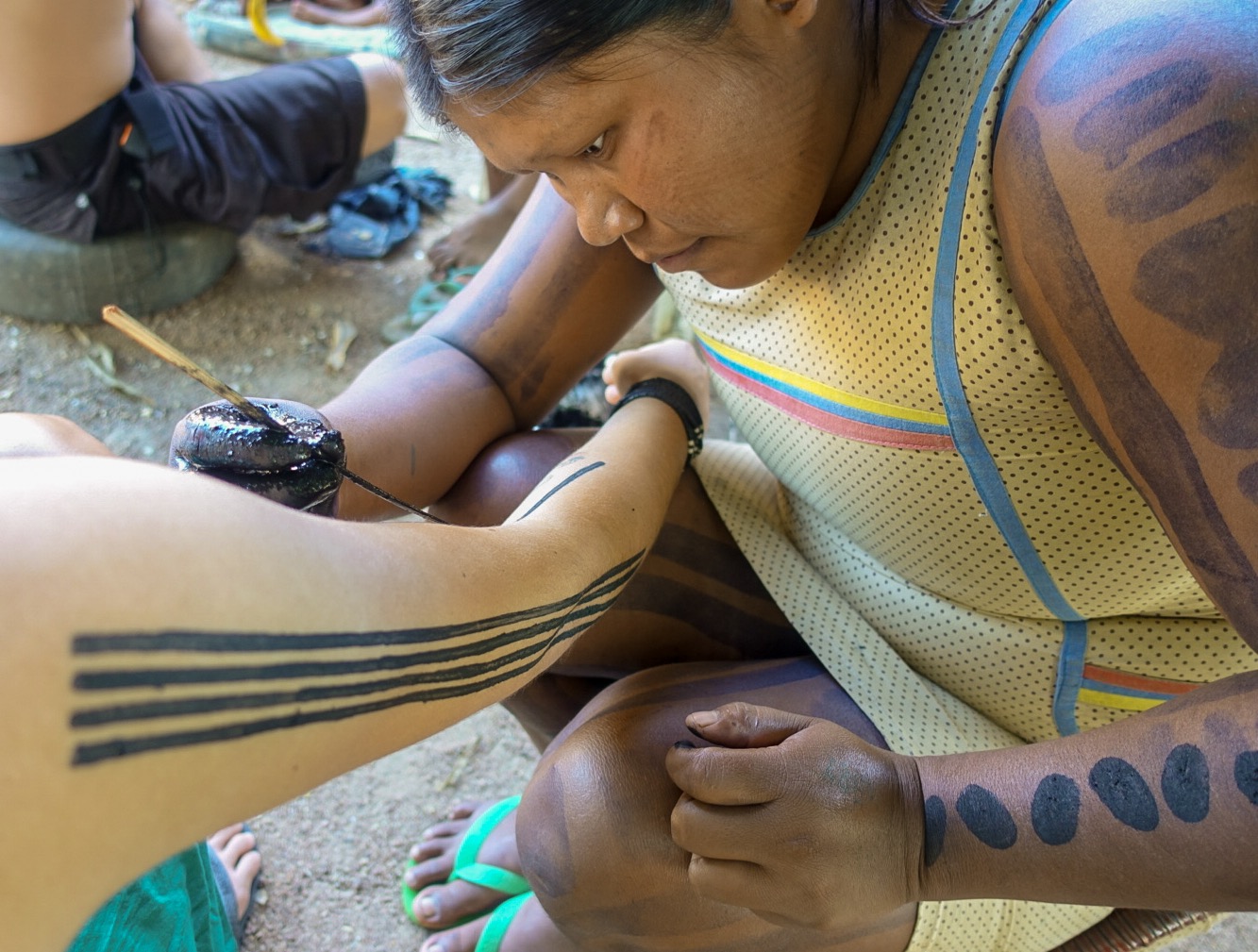
This is one of our favorite times of the year for topwater action for bicuda, matrincha, and peacock bass. Jungle fish are always really hungry at the beginning of the season. Just imagine: They spent the wet season with a lot of water inside the jungle, thereby allowing shelter and protection for their prey. This makes feeding much more difficult. So when the water finally comes down, it’s hunting time for all predator species, and they really become aggressive.
We started training our new pro guides in all sections of the river (1 to 4) and showed them the wide range of fishing possibilities on the all river sections. This included the variety of jungle species possible on the fly and techniques for each specie and each water type.
The key in the training for the guides is to crack the code of fish behavior and discover their feeding, resting, and protection zones. Of course, this is all different depending on fish species, type of water (runs, pools, riffles, flats), and water level. Mastering these complexities is the key for determining and executing a successful fishing strategy each day.
While scouting, we were blessed with some amazing feeding frenzies of peacock bass in rock structures. Then we saw fish feeding on the surface, and these were the big matrincha. Always fun!
The highlight of opening week was the large schools of nice-sized fish in perfect water conditions. This allowed us to catch them with dry flies and poppers — a delight on a 5-6 weight rod. These fish were hungry and strong, and they averaged between 4 to 6 pounds.

Later we found where the wolfish were sheltering themselves. At the beginning of the season, these fish are generally not as discoverable as abundantly as they are later in the season. However, we found some fish in perfect shallow and crystal clear, small jungle tributaries. And finding schools of wolfish is like finding hungry wolves — you can expect them to attack your fly. No question.
Fishing with dry flies for pacu gave us one of the best gifts of the week. We also got some crazy topwater action with the torpedoes of the jungle — the bicuda. These fish hit all kinds of topwater flies, but the best was getting them to come to the surface to check out Chernobyl flies and seeing them hit in shallow water right in front of us. We normally catch these fish at the top of a run before the whitewater, but in this case, we had a different experience. They attacked the flies, and once hooked, they headed downstream at light speeds to the whitewater, jumping repeatedly the whole time. We ran after these fish as they headed downstream, jumping over rocks – and a few times, we hit our shins and knees on them. Eventually we ended up with the trophy in our hands. We consider these fish torpedoes for good reason!





